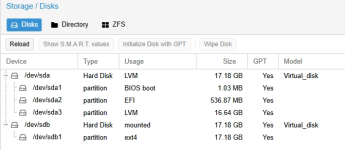Hi everyone,
Could you help me understand something on my Proxmox backup.
I updated it to 4.0 to connect to an S3 endpoint and I made my first backup on it, but I saw that the space used on my local storage has increased.

I can correctly see the backups on the bucket so I assume that I correctly set up my datastore.
Thanks for your help.
Could you help me understand something on my Proxmox backup.
I updated it to 4.0 to connect to an S3 endpoint and I made my first backup on it, but I saw that the space used on my local storage has increased.

I can correctly see the backups on the bucket so I assume that I correctly set up my datastore.
Thanks for your help.




